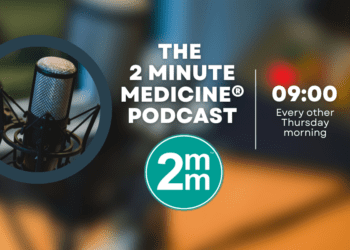Prenatal exposure to combined maternal drinking and smoking significantly associated with the risk of stillbirth
1. Dual exposure to drinking and smoking after the first trimester of pregnancy was significantly associated with increased risk of late stillbirth compared to individuals with no exposure or who had quit before the end of the first trimester.
2. Given that alcohol is frequently used with tobacco, including by pregnant women, these findings further highlight the detrimental effects of smoking and drinking on fetal and maternal health and provide evidence for maternal drinking as a modifiable risk factor for stillbirth.
Evidence Rating Level: 2 (Good)
Study Rundown: The strong association between maternal smoking during pregnancy and stillbirth has been well-established in the medical literature. However, data on the effects of maternal drinking alone or in combination with smoking during pregnancy on the risk of stillbirth is limited, with most studies using a retrospective design. This prospective cohort study sought to examine whether prenatal exposure to alcohol, tobacco cigarettes, or both was associated with the risk of stillbirth in South Africa and the United States. The main endpoints of the analysis were stillbirth, defined as fetal death at or after 20 weeks’ gestation, and late stillbirth, defined as fetal death at or after 28 weeks’ gestation. Of particular interest were late stillbirths, as this classification is used by the World Health Organization to assess national rates and trends as part of the Every Newborn Action Plan by 2030. Among 8,506 pregnant women with 11,663 pregnancies, combined drinking and smoking after the first trimester of pregnancy had 2.78 times the risk of late stillbirth compared to individuals with no exposure or who had quit before the end of the first trimester. These results suggest that dual exposure to drinking and smoking after the first trimester of pregnancy was significantly associated with increased risk of late stillbirth compared to the control group. Given that alcohol is frequently used in combination with tobacco, including during pregnancy by women, these findings further highlight the detrimental effects of smoking and drinking on fetal and maternal health during pregnancy and provide extensive evidence for maternal drinking as another major modifiable risk factor for stillbirth. A limitation of this study was that the exposure status of participants was based on self-reporting captured during the recruitment interview and thus, it is possible that some women were misclassified.
Click to read the study in JAMA Network Open
Relevant Reading: Maternal smoking and the risk of still birth: systematic review and meta-analysis
In-Depth [prospective cohort]: This longitudinal cohort study, The Safe Passage Study, included 8,506 women with 11,663 pregnancies (mean [SD] gestational age at enrollment, 18.6 [6.6] weeks; 59% South African, 59% multiracial, 23% White, 17% American Indian, 0.9% other races; 8% ≥35 years). Data was collected between August 2007 and January 2015, with analysis completed in November 2020. Inclusion criteria included pregnant women from South Africa and the US for whom the pregnancy outcome was known by 20 weeks’ gestation or later and who did not terminate their pregnancies. In total, there were 145 stillbirths (12.4 per 1000 pregnancies) and 82 late stillbirths (7.1 per 1000 pregnancies). In 51% of pregnancies where women were not exposed to alcohol or tobacco cigarette, the risk of stillbirth was 4 per 1000 pregnancies. After the first trimester, 18% drank and smoked (risk of stillbirth, 15 per 1000 births), 9% drank only (risk of stillbirth, 10 per 1000 pregnancies), and 22% smoked only (risk of stillbirth, 8 per 1000 pregnancies). In comparison to the control group with no prenatal or first trimester exposures, pregnancies prenatally exposed to drinking and smoking had an adjusted relative risk (aRR) of late stillbirth of 2.78 (98.3%CI, 1.12-6.67), pregnancies prenatally exposed to drinking only after the first trimester had an aRR of 2.22 (98.3%CI, 0.78-6.18), and pregnancies prenatally exposed to smoking only after the first trimester had an aRR of 1.60 (98.3%CI, 0.64-3.98). Compared to controls, the aRR for all stillbirths was 1.75 (98.3%CI, 0.96-3.18) for dual exposure, 1.26 (98.3%CI, 0.58-2.74) for drinking only, and 1.27 (98.3%CI, 0.69-2.35) for smoking only.
Image: PD
©2021 2 Minute Medicine, Inc. All rights reserved. No works may be reproduced without expressed written consent from 2 Minute Medicine, Inc. Inquire about licensing here. No article should be construed as medical advice and is not intended as such by the authors or by 2 Minute Medicine, Inc.







